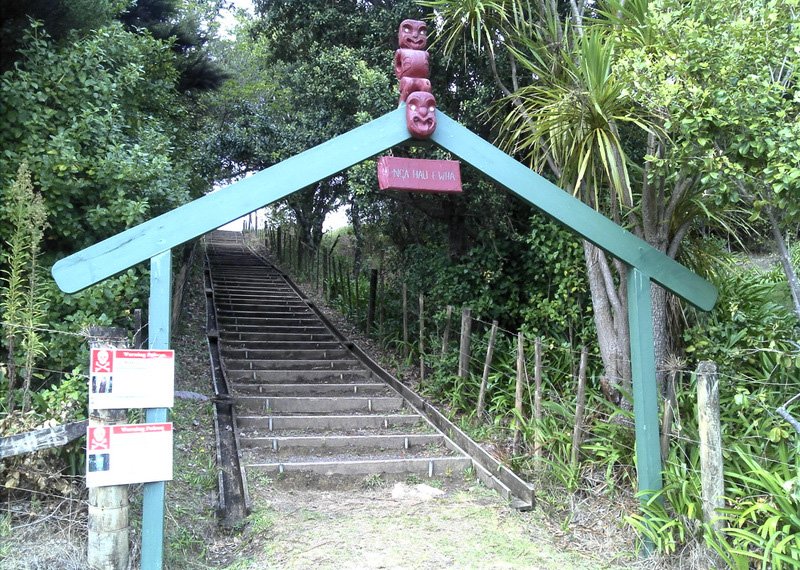Te Araaka Wahi Tapu

Te Araaka is an ancient area of wāhi tapu sites sacred to Ngāti Kuta and Patukeha.
The heritage values of a site in the Bay of Islands central to the identity and cultural well being of Ngāti Kuta and Patukeha have been formally recognised.
Heritage New Zealand Pouhere Taonga has listed Te Araaka as a place of significance in Te Rāwhiti as a Wāhi Tapu (Sacred) Area. The application was made by Ngāti Kuta on behalf of themselves and Patukeha.
The listing identifies Te Araaka as an ancient area containing a number of individual wāhi tapu sites sacred to Māori in the traditional, spiritual, religious, ritual and mythological sense.
The Wāhi Tapu Area Listing Report, by Dr Dennis Ngawhare, describes in his interviews with Kaumatua how tūpāpaku were carried along the Te Araaka pathway and up to their ancestral burial caves.
“During the Musket War period of the early 1800s, warriors returning from journeys to the south would stop at Te Araaka with their fallen comrades,” says Kaumātua Matu Clendon.
“The tūpāpaku were then lifted by aka vines up the cliff at Opourua (also known as Oke Bay) – hence the literal name Te Araaka.”
After last rites and final preparations the tūpāpaku would be carried along the trail following the ridgeline to the burial caves near Rakaumangamanga (Cape Brett).
A number of Wāhi Tapu and archaeological sites are present in this landscape, including the urupā named Te Araaka which is still used today.
Rakaumangamanga itself is one of the support pillars of Ngāpuhi, reinforcing the mana of this maunga as a significant spiritual landscape.
“Traditionally Rakaumangamanga was a beacon for voyaging waka, a navigational way point of the Polynesian triangle linking Rakaumangamanga to Rapanui (Easter Island) and Taputapuatea (Raiatea Island, Society Islands),” says Mr Clendon.
“In later years, Ipipiri and Te Rāwhiti became a place where some of the earliest contacts between Māori and Pākehā took place, with James Cook arriving in the Endeavour in 1769 and Marion du Fresne in 1772.”
In subsequent years, it also became the scene of shifting tribal mana and an intense focus on whenua retention.
This Wāhi Tapu Area connects the past to the present and informs the future for Ngāti Kuta and Patukeha.
Traditional associations with the ancestors of Ngāti Kuta and Patukeha has ensured that connection between ancestor and descendant was secured through the continual usage of the urupā located along the wāhi tapu pathway.
“Today the continuation of tikanga through karakia, waiata, whaikōrero and traditions ensures an unbroken link of ritual and recognition over the past two centuries is retained and upheld by Kaumātua and Kuia for our children to follow,” says Mr Clendon.
“Te Araaka remains a constant expression of rangatiratanga and connection.”
After confirmation by the Māori Heritage Council of HNZPT, the Te Araaka Wāhi Tapu Area will be entered on the NZ Heritage List / Rārangi Kōrero on 28 March 2022.